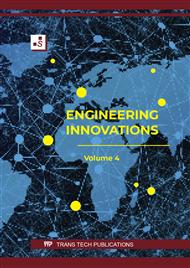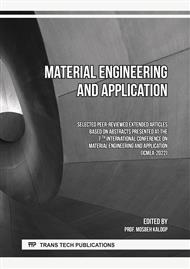p.1
p.9
p.15
p.21
p.31
p.37
p.47
Tensile Strength of 3D Printing Scaffold Design Truncated Hexahedron for Tuberculosis Drug Delivery
Abstract:
Mechanical properties are important characteristics of scaffolds as biomaterials implant in tissue engineering. This study focused on the analysis of the tensile strength of the 3D printing scaffold with a geometric design of the truncated hexahedron unit with pore size variation and combinFive variations of pore size of the scaffold (600, 800, 1,000, 1,200, and 1,400 µm) were fabricated from Polylactide acid (PLA) filament using the Fused Deposition Modelling (FDM) method through an ordinary commercial 3D printer. The IBS paste was synthesized from hydroxyapatite (HA), gelatin, hydroxypropyl methylcellulose (HPMC), and streptomycin. The characterization performed in this study were the pore size test with a digital microscope, tensile strength, elongation test, porosity, and contact angle. The 3D printed scaffold formed micropores after injected with IBS paste from a range of 130-230 µm. The tensile test results showed that the tensile strength of the 3D printing scaffold increased after being injected with IBS paste. In addition, the elongation test also shows a positive trend with increasing values of elongation after injection of IBS paste. The contact angle test results indicated that the scaffold was hydrophilic. From those characterizations, it could be concluded that 3D printing scaffold meet the criteria of scaffold for bone tissue engineering and drug carrier for tuberculosis.
Info:
Periodical:
Pages:
31-36
Citation:
Online since:
February 2023
Permissions:
Share:
Citation:



